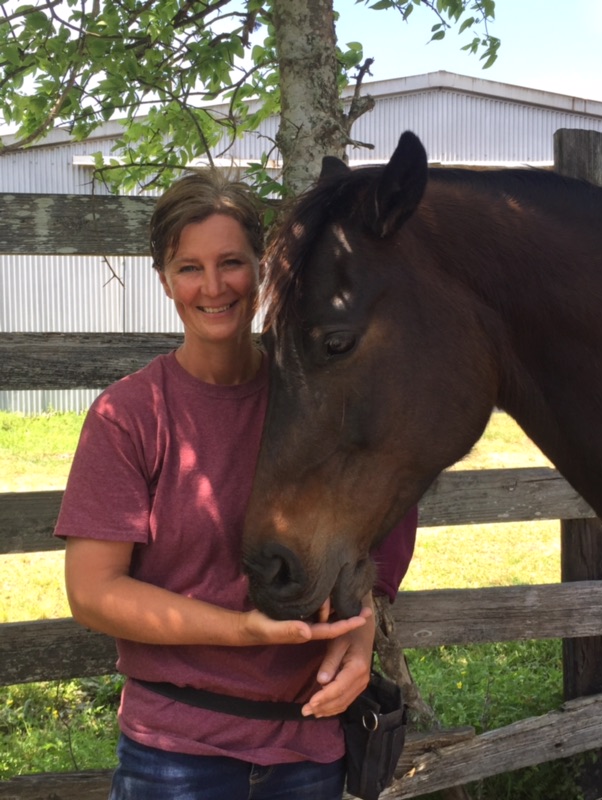The Cowboy Way Gets Updated

More than once I’ve hiked my boot up on the fence and grumbled about the way people treat horses during the training process. I can tell endless stories about how we used to do it “back in the day” and chances are I can get someone to actually listen to me, at least for a few minutes, before they remember something that needs to be done.
The ideas and opinions about horse training have changed a lot in the past 50 years. The way I was taught during my teenage years didn’t feel right back then and, in a lot of ways, what I’m doing now is trying to make up for those years of harsh training methods. Back then, words like “respect” and “connection” would have gotten you laughed out of the barn. Horses were taught to fear humans until all their resistance disappeared, until the spirit of the horse faded away.
I wish I could say that I changed my ways under the guidance of Ray Hunt or Tom and Bill Dorrance. Those were the leaders of gentle training, the true professionals that stood up to those who preached the old methods – convinced there was a better way. They received the ridicule and stinging comments of their peers until their peers stopped laughing and saw miracles taking place.
Instead of fearful horses, they saw horses that were engaged, responsive, full of spirit, and eager to work. In place of herd-bound and barn sour animals, they saw horses that were excited for the day to start, horses that worked in partnership with the rider.
While their methods started the change, other methods are still evolving, each one a little different, each reaching out to touch the golden ring of a true horse/human connection.
My change came about because I fell in love with a horse, I made a connection that I never knew could be made, and instead of “teaching” a horse, I found myself listening. My education was with a “been there, done that” old gelding named Scout. While I thought I knew a lot about training, Scout started my education by letting me know that I needed to throw all that supposed knowledge in the trash. Very slowly, very patiently, he taught me to listen – at first to the silence. A busy mind has no place around a horse. The focus isn’t on some lesson the horse needs to learn, it’s on calming down, on having a quiet mind to hear what the horse is trying to say.
There are probably 50 top trainers in the US, each with their own method, each a little different from the others. Most of them have books to sell, training tools that are “must have” items, videos and clinics that cost a bundle. Although I frown on some of the expenses, they are all spreading the word, helping smash the harsh training methods of yesteryear and placing both horses and humans on a path toward better understanding one another.
At our ranch, we use a very specific type of training, one that has been successfully used on everything from elephants and marine mammals to drug and bomb dogs. Positive reinforcement, rewarding the behavior we are seeking, letting the animal know that the choice they make is what we are asking them to do. It takes a lot of skill, but the results are nothing short of amazing.
Some of you have had the opportunity to work with our trainer, Meg Eades. When I say “work with,” that’s exactly what happens around her. There is no observing, for she draws you in, shows you all the little things and before you know it, you’re working right along with her, a horse at your side, and you’re understanding exactly the benefits of her approach.
At Habitat for Horses, we bring in everything from highly trained hunter-jumpers to never-been-touched mustangs. Sadly, we seldom know anything about the horse, just that it’s been abused, neglected or the owner has been involved in a crime. The courts award the horse to us and we take it from there – medical, dental, hoof care, refeeding, physical and mental rehabilitation. At some point the horse is healthy enough to start training, or retraining.
I’ve seen Meg work wonders, very patiently take baby steps while she works a new horse on the ground. A few days later, I look over and she’s riding the horse, a horse that would have taken me a month just to get under saddle. To say I’m fascinated is a big understatement.
We have a rule that when someone wants to adopt a horse they need to come spend time with the horse, to actually see if there is a match. Some folks think adopting a horse is like buying a coat, it looks pretty in the picture so we’ll just get it and bring it home. It doesn’t work that way, because we want to make certain that the horse never again gets in a bad situation.
If you’re adopting, you’re in the arena with Meg. You’re in a training session, understanding what it is that she does, but more important, understanding what the horse is saying.
I can’t think of anything more important to a true horse person than making that perfect connection, reaching for that golden ring of bonding that turns “This is my horse” into “Let me introduce you to my best friend.” When we’re able to make that match, we have truly given the horse another chance at life.
